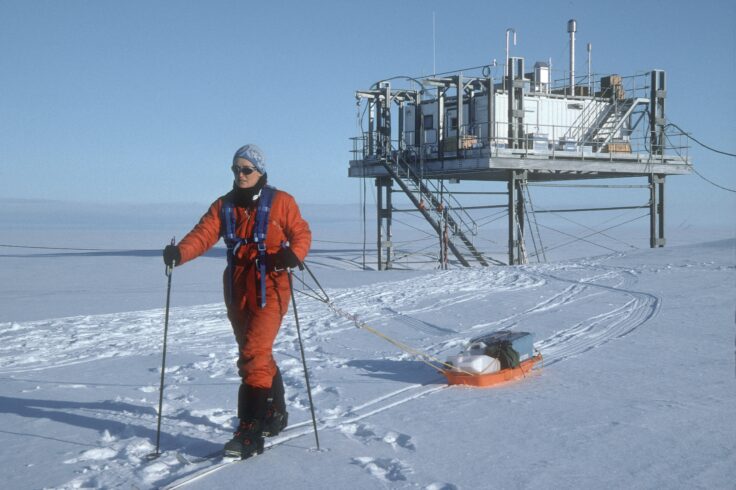Carbon dioxide level breached at Halley VI
Levels of the greenhouse gas carbon dioxide (CO2) in the atmosphere – which is the leading driver of recent climate change – have reached a milestone at British Antarctic Survey’s (BAS) Halley Research Station in Antarctica. Scientists from BAS and University of East Anglia (UEA) working at the station’s Clean Air Sector Laboratory (CASLab), recorded 400 parts per million (ppm) for the first time this month (June).
CO2 concentrations in the northern hemisphere have already reached this milestone, because of their proximity to human populations responsible for the highest emissions of CO2. It takes considerably longer for CO2 emissions to reach remote locations in the southern hemisphere.
Observations of the 400 ppm milestone were recorded near Antarctica last month by researchers from National Centre for Atmospheric Research during a flight campaign, but this is the first time a sustained reading of 400 ppm, over the period of a day, has been recorded at a research station on the ice.
Professor David Vaughan, Director of Science at British Antarctic Survey, says:
“The remoteness of the Antarctic continent means it is one of the last places on Earth to see the effects of human activities, but the news that even here the milestone of carbon dioxide levels reaching 400 parts per million has been reached shows that no part of the planet is spared from the impacts of human activity.”

Ice cores from Antarctica show that carbon dioxide concentrations are higher today than they have ever been at any point in the last 800,000 years. In fact when concentrations of the heat-trapping gas were last at 400ppm, it was millions of years ago and temperatures and sea levels were far higher than today.
Professor Vaughan continues:
“Discussions in Paris last November showed the collective will of global leaders to limit the future global temperature to well below 2˚C. This data from Halley shows that the main cause of global warming, carbon dioxide concentrations, are still rising. And today at Halley Station, CO2 is rising faster than it was when we began measurements in the 1980s. We have changed our planet to the very poles.”
Professor Corinne Le Quéré, Director of the Tyndall Centre for Climate Change Research at UEA, says:
“This new data highlights once more the need to move away from fossil fuels as an energy source. We are making huge progress in the UK and worldwide with major deployments of renewable energy. However, our cars still run on petrol and our homes are still heated with gas, and that is really slowing down progress. Emissions need to decrease to near zero to stop the rise in CO2 at Halley and elsewhere and to control climate change. We have all the solutions at our finger tips, we now just need to take action.”
Ends
NOTES:
Measurements were captured at Halley Research station’s CASLab using two devices. A Picarro CRDS instrument (which monitors CO2) and a Siemens Ultramat CO2 Analyser that is being run in collaboration with the University of East Anglia.
The Clean Air Sector Laboratory (CASLab) is a specialised observatory at Halley Research Station dedicated to studies of this remote background atmosphere and the processes that influence its chemical signature. It contains a suite of instruments to measure the chemistry of the clean air in this sector of Antarctica. The laboratory supports short-timescale studies to determine and quantify controlling processes, and long-term observations to monitor for compositional change.
Halley is a ‘Global’ station within the World Meteorological Organisation Global Atmospheric Watch Programme, providing critical baseline observations of atmospheric composition to the international community. Since 1983, Halley Station has contributed to the NOAA cooperative sampling network.